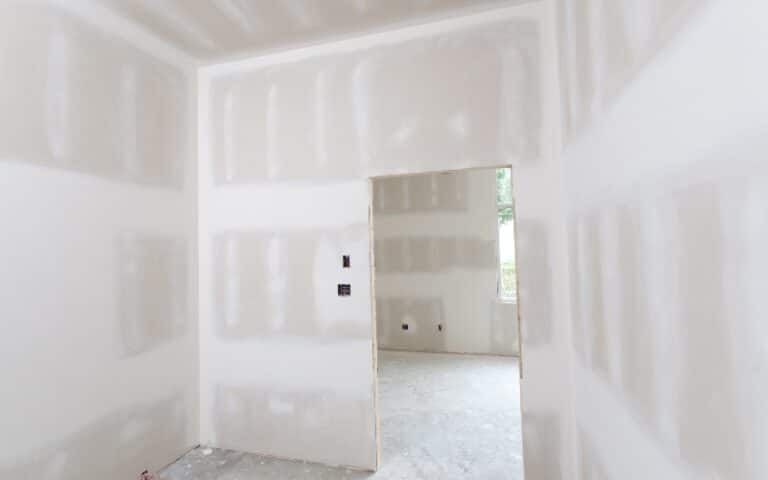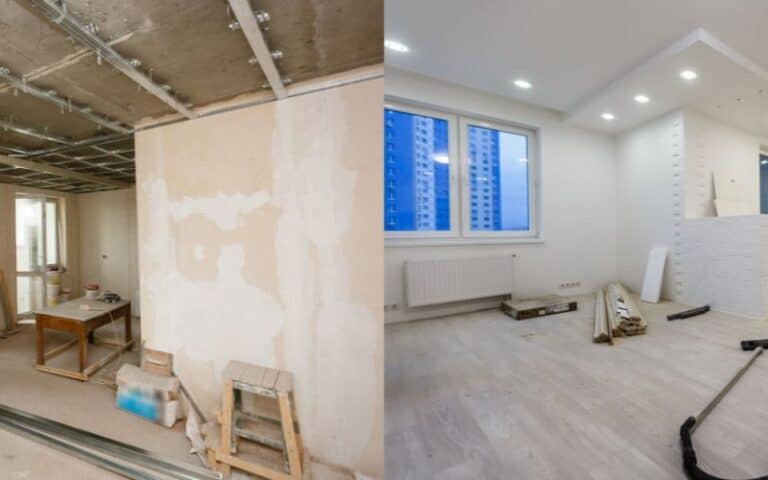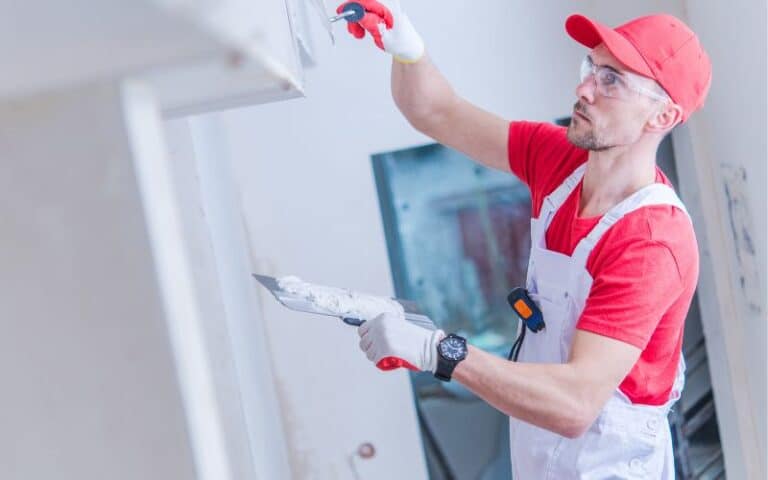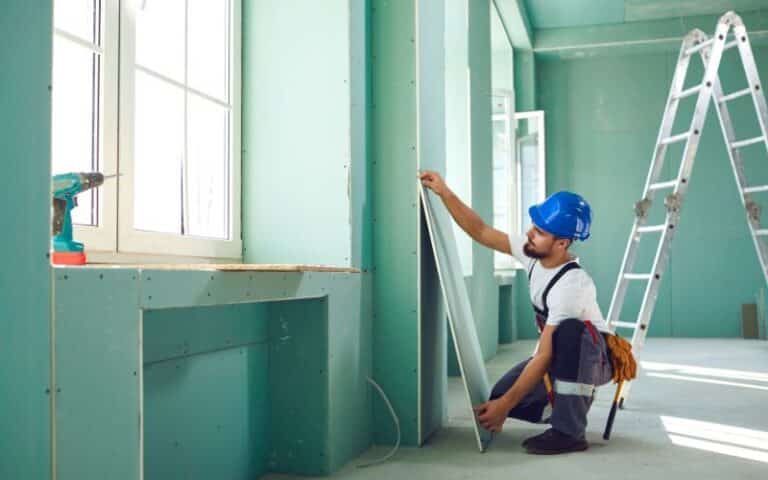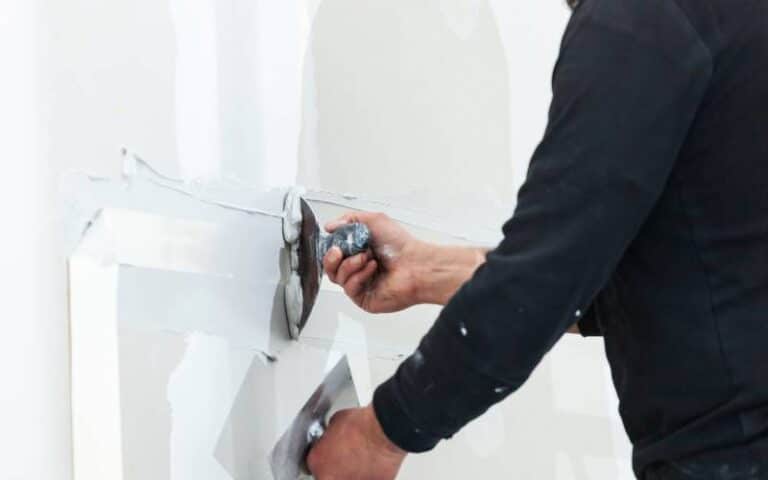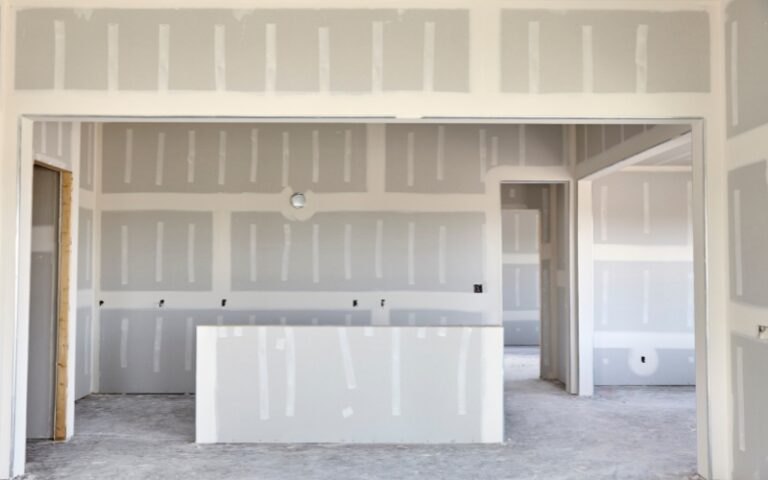Think of a thousand things that can go wrong because you do not correctly place your drywall.
Imagine your ceiling falling off after construction. You will compromise yourself, adding extra expenses to your already planned budget.
However, drywall has different types and ways to hang them, especially regular and lightweight drywall.
So, people wonder if they can hang their drywall top to bottom.
Yes, you hang drywall from top to bottom. When hanging your drywall, constantly endeavor to hang the top sheet first. Also, raise it to the ceiling, use a drywall nail at every point from top to bottom, and ensure it’s firm. Moreover, secure the drywall to prevent it from falling off.
Before hanging your drywall, there are certain things you need to know, and this article will be your guide.
At the end of this article, you will know the best way to hang your drywall, and you will satisfy your curiosity concerning the use of drywall.
Ready for a Drywall Quiz?
Is Drywall Hung From Top To Bottom?

Yes, you hang drywall from top to bottom to have a secure and tight joint at the ceiling.
When hanging your drywall, endeavor to hang the top sheet first. However, this type of drywall is not easy to hang, so I’ll advise you to get help.
Get a partner and go slow because doing it on your own or rushing it over will cause large cracks if you end up not aligning the sheet correctly.
Large cracks are hard to repair because they require more mud to fill them. The dirt may drop to the floor, causing a mess.
Can You Hang Your Drywall From The Bottom Up?
The best way to hang your drywall is from top to bottom to be safe.
The chances of getting cracks if you hang your drywall from the bottom are very high compared to starting from the top.
If you install your drywall from the bottom, the sheet will fall if the bottom of your drywall collapses because you mounted it from the wrong place.
The disadvantage of your drywall falling off is extra charges from your constructor and, as a constructor, additional workforce and workload.
However, you can install drywall from the bottom for commercial buildings, which people use sparingly.
For residential buildings, endeavor to install your drywall from the top to increase its strength, stability, and durability.
How Do Professionals Hang Drywall?
Hanging drywall ideally depends on your ability to tighten your panels to the framing members correctly.
Once you’ve perfected this act, you can single-handedly finish every other aspect of your room.
Below are six ways to hang your drywall as a professional:
#1. Check Wall Studs
Checking wall studs is the first thing you need to do before hanging your drywall. You will only have a perfect job if the studs are flat.
#2. Hang The Drywall On Your Ceiling
Since you can hang drywall by yourself, I will advise you to get an assistant to help you lift and position the drywall sheet while you secure the sheet using nails or screws.
#3. Lift Wall Panels Into Place
Start from top to bottom when you are fixing wall panels. Lift your panel into two screws before sliding it up. Fix a screw at the bottom of the panel, then begin your workout and up the panel.
#4. Prepare To Place Drywall On The Walls
When installing your drywall after covering your ceiling, attach the top sheets to the wall and place your drywall horizontally, then start with the top, working your way to the bottom.
#5. Drive Screws Into Drywall
Using the same method you used in screwing drywall panels, drive your screw below the surface of your drywall so you can cover them with drywall mud, and make sure you sand it properly and smoothly.
#6. Drive Nails Into Drywall
Just like screws, drive your nails below the surface of your drywall. This way, you can cover your drywall mud. You can also sand smoothly.
Does Direction Matter When Hanging Drywall?
Direction matters when hanging your drywall. It produces structural strength when you hang your drywall in the right direction.
Your drywall will be more robust when you hang it in the long direction, enabling less sagging when attached upright.
Several persons consider hanging their drywall horizontally or vertically and may need to turn it correctly.
Before installing your drywall, you must consider what type of building you are installing your drywall in.
We have two kinds of buildings in this regard:
- Commercial buildings
- Residential building.
#1. Commercial Buildings
Installing drywall vertically is easier in commercial buildings.
Installation is easier because hanging your drywall horizontally requires you to cut pieces at angles, which is complex and can result in tons of injuries.
Installing your drywall vertically in commercial buildings will make it easier for you to lift the panels for inspection purposes.
Inspections are necessary, especially when you want to change the panels.
Imagine if there is a fire outbreak in a commercial building. The installation of drywall vertically will allow the drywall to fall safely.
Considering the height of commercial buildings, if you install your drywall horizontally, in this situation, the drywall will pile up, causing the ceiling to collapse.
#2. Residential Buildings
Installing your drywall vertically in a residential building will make it challenging to hide wires.
Also, hiding dangling wires is advisable in a residential building where you have children and minors.
The horizontal installation of your drywall will increase its structural strength, which you need in a residential building.
The horizontal installation also prevents the drywall from sagging, which can cause cracks.
When your drywall is hung vertically, it can result in saggy panels. This is because the drywall is too heavy.
Compared to being hung vertically, drywall has less potential for cracks if hung horizontally, and you can change or remove your drywall panels without placing too much pressure on them.
Seven Tips For Hanging Drywall Correctly
You can hang your drywall speedily if you know the right way to go about it.
Two professionals can use the right tools and screws to cover a 12-by-16-foot room in just one hour.
Nevertheless, it’s not all about speed. Using the correct sizes and lengths of screws and practicing over time will give you a perfect job.
To hang your drywall correctly, follow the steps below, and you’ll be good to go:
#1. Take a Measurement and Cut Drywall to Fit your Ceiling
To be sure where to place your first panel, measure from a corner to ensure it is upright to the joist.
If the measurements go wrong and your panel doesn’t fit your ceiling, move the measure to the end of the first panel and mark it.
#2. Cover The Ceiling
Ensure the edge of your panel is upright, and the ends are tight to the wall. Get an assistant to hold your panel while you fix it into one part of your ceiling.
In an equally spaced manner, insert five screws into the points closest to the middle of your panel.
Continue until you reach the opposite wall, and ensure they are a few feet from each row.
#3. Measure and Cut Drywall for the Wall
Once you are done covering the ceiling, please measure the width of your wall and cut your drywall sheet, making sure it is slightly shorter than your measurement.
With the help of your assistant, lift your drywall and fix it against the ceiling, ensuring it is tight and secure.
Place a mark using a utility knife and a drywall square and remove the excess material against the line.
#4. Install Drywall On The Wall
Before installing your drywall, use some Drywall Adhesive to enhance noise reduction on your wall.
#5. Cut Openings for Walls and Windows
Your room should have or need a window.
If you haven’t installed your windows, indicate future window corners by covering the area with a drywall sheet and driving in a few screws for indications.
If your windows are already in place, measure them and cut the opening in your drywall panel before hanging them.
#6. Secure the Drywall Against the Outside and Inside Corners
When installing your drywall, make sure your drywall reaches the floor and does well to frame the outside corners.
For inside corners, ensure your pieces fit closely but are not jammed together.
#7. Add the Finishing Coats of Drywall mud.
You can add finishing coats to your drywall to repair damage in the future easily. Moreover, adding finishing coats beautify your drywall.
FAQs
Why is Drywall Hung Horizontally?
Horizontal seams are easier to finish than vertical ones and are less noticeable.
Should Drywall Touch the Floor?
It is always advisable to leave a ½ inch into ⅝ inch gap between your drywall and the floor.

